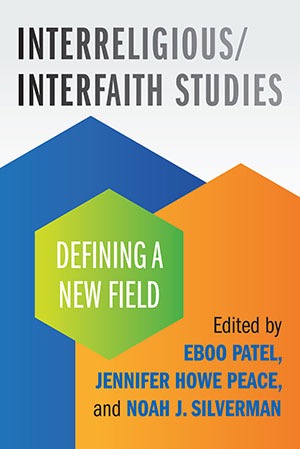interfaith pedagogy
Select an item by clicking its checkbox

Interreligious/Interfaith Studies: Defining a New Field
Date Reviewed: January 18, 2019
During a job interview over a decade ago for a position in Christian theology, I mentioned how I incorporate non-Christian texts when teaching Christology (the study of Christ). One member on the committee was nonplussed, demanding an explanation. A rare occurrence then, it would be quite shocking now, as the emerging field of interreligious (or interfaith) studies is becoming more common. What exactly, though, are its methods, aims, definition, scope, areas of expertise, value, strengths, and limitations? Judged by the slash in this book’s title, much still needs to be formulated. This collection of eighteen essays (and an introduction by the editors) provides a solid foundation for furthering such attempts. The book is the fruit of a 2016 conference at California Lutheran University. Part One maps the field, and here the diversity of US colleges and universities augment the breadth and flexibility of definitions provided. Most contributors to this book prefer the term “interreligious” over “interfaith” (I prefer the latter, but much depends on how you define faith and religious).
A strong current in the essays is pragmatic: seeing the benefits an interfaith pedagogy can bring to a range of disciplines in the humanities – raising the profile of religious studies, and religious literacy, more generally. Some contributors in Part One, however, seem constricted by the academy’s theology / religious studies debate and argue about where interfaith / interreligious studies best belong, an argument that requires one to believe in the rigidity of such departmental boundaries in the first place.
Part Two examines interfaith pedagogical philosophies and specific curricula. Professors and future educators (at all levels) will benefit from how the contributors employ specific texts, classroom activities, and assignments. I am already thinking of how I can use some of these ideas in my World Religions module; for example, adding a more expansive sensorial list of preparatory questions for students before they visit religious sites and places of significance.
Part Three focuses on the challenges and benefits this field provides for students and educators; for example, how studying anti-racist approaches or ecological issues through an interfaith lens develops a more expansive, nuanced picture, while also encouraging deeper interfaith participation and engagement. Finally, Part Four (my favorite section overall) presents the value of interfaith studies beyond the classroom, with essays on its positive impact for religious leaders, for those in prisons, for those seeking to enhance secular careers (because of their multifaith literacy) – and civically in promoting a truly interfaith and pluralist society. On this last note, Dublin (my adopted hometown as a New Yorker) was the first major city to publish an interfaith charter. This book, however, is US-focussed (or limited, depending on one’s view): it could seem to the uninitiated that the field is primarily of relevance to the United States. Hopefully a second volume is planned to expand the focus beyond the confines of the fifty states, and not just to Europe, but globally.
By the way, in 2019 (and beyond), if anyone is asked how to teach Christology (or a similar topic), I suggest you bring in as many faith-positions as possible – that is where the fields of theology and religious studies are heading.